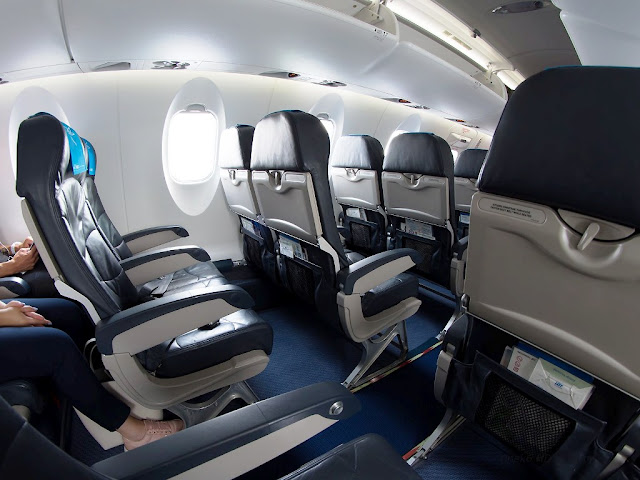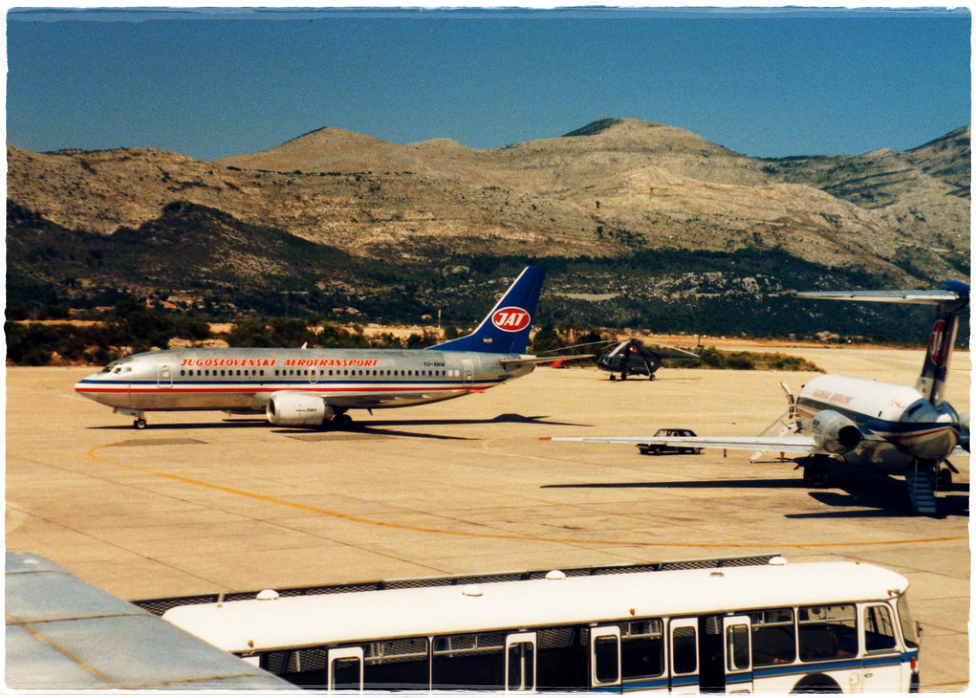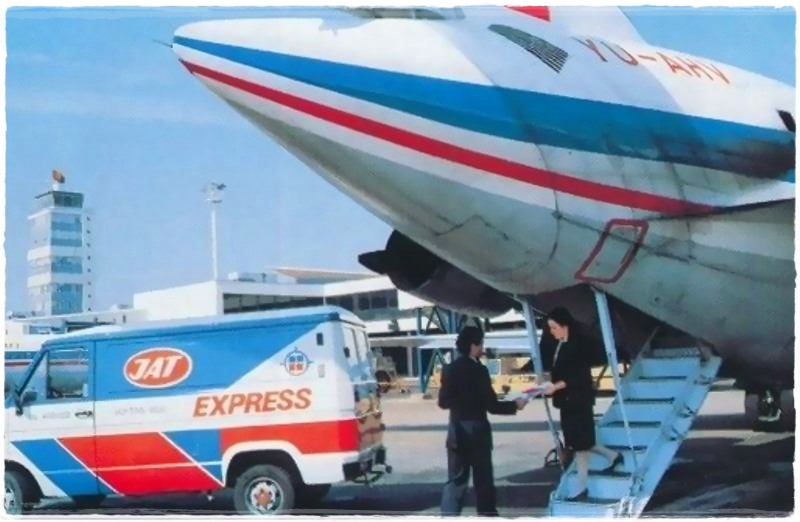Пише се бисмо[url=http://beobuild.rs/forum/viewtopic.php?p=610398#p610398:1na4jaxq je napisao(la):Прле » Thu Mar 21, 2019 11:29 am[/url]":1na4jaxq]Кад се вратиш са ханимуна (могло је и свадбено путовање, разумели би смо) јави се и кажи како си прошао.
Koristite zastareli preglednik. Možda se neće pravilno prikazivati ova ili druge veb stranice.
Trebalo bi da nadogradite ili koristite alternativni preglednik.
Trebalo bi da nadogradite ili koristite alternativni preglednik.
Air Serbia
- Začetnik teme JohnnyLee
- Datum pokretanja
Duleja
Advanced
A i prozivka je malo previše intimna... 
[url=http://beobuild.rs/forum/viewtopic.php?p=610409#p610409:3u58ztd9 je napisao(la):Пантограф » 21 Мар 2019, 11:10[/url]":3u58ztd9]Нормално. И екстремно глупи људи би досад већ схватили. Штавише, то треба да им буде најзаступљенији модел у флоти. Тако би из Београда могли да покрију нпр. сваки немачки аеродром (Визер је пропао у Нирнбергу са А320, али за авион са 80 места сигурно има простора и пет пута недељно), целу Скандинавију и то фреквентно, и још гомилу дестинација. Затим, да успоставе одрживу мрежу летова из Ниша итд.
Веће авионе, осим на неколико линија (све их је мање, и биће их мање како јача конкуренција), могу да доведу до иоле прихватљивог нивоа попуњености само транзитним путницима, а то се мање исплати.
игзекли. иначе, договорили су опет изнајмљивање једног ЦРЈ900 током летњег шпица, овог пута од естонске Нордике. ово је ентеријер:

Прле
Expert
- Učlanjen(a)
- 29.11.2018.
- Poruke
- 7.446
- Pohvaljen
- 11.139
:kk:[url=http://beobuild.rs/forum/viewtopic.php?p=610501#p610501:1pgjuagy je napisao(la):futureast » Чет Мар 21, 2019 6:54 pm[/url]":1pgjuagy]Пише се бисмо[url=http://beobuild.rs/forum/viewtopic.php?p=610398#p610398:1pgjuagy je napisao(la):Прле » Thu Mar 21, 2019 11:29 am[/url]":1pgjuagy]Кад се вратиш са ханимуна (могло је и свадбено путовање, разумели би смо) јави се и кажи како си прошао.
Хвала. Дешава се и најјачим.
[url=http://beobuild.rs/forum/viewtopic.php?p=610538#p610538:1pgjuagy je napisao(la):Duleja » Чет Мар 21, 2019 9:33 pm[/url]":1pgjuagy]A i prozivka je malo previše intimna...
:laugh:
Наравно причамо о томе како је прошао са Алииталијом.
kingmanowar
Higher intermediate
- Učlanjen(a)
- 10.02.2010.
- Poruke
- 608
- Pohvaljen
- 646
A ja mislio da vas zanima moj ljubavni zivot 
DzonTravolta
Expert
- Učlanjen(a)
- 26.07.2015.
- Poruke
- 6.329
- Pohvaljen
- 8.485
DzonTravolta
Expert
- Učlanjen(a)
- 26.07.2015.
- Poruke
- 6.329
- Pohvaljen
- 8.485
Ma pratim, zezam se.
Mislim da ovo svakako ne može da bude trajnije rešenje, što i nije.
Mislim da ovo svakako ne može da bude trajnije rešenje, što i nije.
tragac
Expert
Super je što će se našim novcem finansirati kabinsko osoblje iz Estonije.
Najbolje rešenje za Air Serbiu je sporo gašenje u toku 12-24 meseca. Tako neće doći do naglog pada kapaciteta ka Beogradu.
Najbolje rešenje za Air Serbiu je sporo gašenje u toku 12-24 meseca. Tako neće doći do naglog pada kapaciteta ka Beogradu.
к'о да су урадили нешто што други не раде. једноставно, треба им још један авион током шпица сезоне, Нордика је једина могла да обезбеди за пристојне паре. барем не раде као Кроација и Адрија, данас за сутра, па им одеру кожу с' леђа
Пантограф
Professional
- Učlanjen(a)
- 23.04.2012.
- Poruke
- 21.561
- Pohvaljen
- 49.693
Ево, да и ја мало хвалим Ер Србију. Осим што је стигао у Београд 10 минута пре времена, вечерашњи лет из Љубљане пружио је путницима задовољство да буду у друштву једне предивне младе стјуардесе ведрог и проницљивог духа. Лепо смо се забављали током пута и пре њега, чинила је плезир и нашим путницима, као и контигенту словеначких војника који продужава, ваљда, за Либан. Ако чита неко из компаније ово, нека има то у виду, а ја ћу им свакако написати и мејл. Нажалост, заборавио сам да питам за име, али, лако је идентификовати - није персерка (што сад кажу cabin senior - и она је била фина), а само су их две на АТР-у.
Такође, куриозитет је да је авионом командовао Салко Хаџић, раније водећи опитни пилот нашег РВ, човек који је, рецимо, тестирао "Ласту". Негде сам био прочитао да је у Ер Србији на Ербасу, кад он, ето, на АТР-у. Нека, нек заради човек мало, може да лети бар још 10 година.
Хтедох да кажем: путник се у пријатном друштву у путничкој кабини, и у сигурним рукама у кокпиту, стварно лепо и угодно осећа.
Такође, куриозитет је да је авионом командовао Салко Хаџић, раније водећи опитни пилот нашег РВ, човек који је, рецимо, тестирао "Ласту". Негде сам био прочитао да је у Ер Србији на Ербасу, кад он, ето, на АТР-у. Нека, нек заради човек мало, може да лети бар још 10 година.
Хтедох да кажем: путник се у пријатном друштву у путничкој кабини, и у сигурним рукама у кокпиту, стварно лепо и угодно осећа.
Mel
Higher intermediate
- Učlanjen(a)
- 26.11.2015.
- Poruke
- 1.151
- Pohvaljen
- 1.427
Pilot i software inžinjer, Dave Kammeyer je imao interesantnu opservaciju oko 737 max problema, kopirano sa twittera:
Some people are calling the 737MAX tragedies a #software failure. Here's my response: It's not a software problem. It was an
* Economic problem that the 737 engines used too much fuel, so they decided to install more efficient engines with bigger fans and make the 737MAX.
This led to an
* Airframe problem. They wanted to use the 737 airframe for economic reasons, but needed more ground clearance with bigger engines.The 737 design can't be practically modified to have taller main landing gear. The solution was to mount them higher & more forward.
This led to an
* Aerodynamic problem. The airframe with the engines mounted differently did not have adequately stable handling at high AoA to be certifiable. Boeing decided to create the MCAS system to electronically correct for the aircraft's handling deficiencies.
During the course of developing the MCAS, there was a
* Systems engineering problem. Boeing wanted the simplest possible fix that fit their existing systems architecture, so that it required minimal engineering rework, and minimal new training for pilots and maintenance crews.
The easiest way to do this was to add some features to the existing Elevator Feel Shift system. Like the #EFS system, the #MCAS relies on non-redundant sensors to decide how much trim to add. Unlike the EFS system, MCAS can make huge nose down trim changes.
On both ill-fated flights, there was a:
* Sensor problem. The AoA vane on the 737MAX appears to not be very reliable and gave wildly wrong readings. On #LionAir, this was compounded by a
* Maintenance practices problem. The previous crew had experienced the same problem and didn't record the problem in the maintenance logbook. This was compounded by a:
* Pilot training problem. On LionAir, pilots were never even told about the MCAS, and by the time of the Ethiopian flight, there was an emergency AD issued, but no one had done sim training on this failure. This was compounded by an:
* Economic problem. Boeing sells an option package that includes an extra AoA vane, and an AoA disagree light, which lets pilots know that this problem was happening. Both 737MAXes that crashed were delivered without this option. No 737MAX with this option has ever crashed.
All of this was compounded by a:
* Pilot expertise problem. If the pilots had correctly and quickly identified the problem and run the stab trim runaway checklist, they would not have crashed.
Nowhere in here is there a software problem. The computers & software performed their jobs according to spec without error. The specification was just shitty. Now the quickest way for Boeing to solve this mess is to call up the software guys to come up with another band-aid.
I'm a software engineer, and we're sometimes called on to fix the deficiencies of mechanical or aero or electrical engineering, because the metal has already been cut or the molds have already been made or the chip has already been fabed, and so that problem can't be solved.
But the software can always be pushed to the update server or reflashed. When the software band-aid comes off in a 500mph wind, it's tempting to just blame the band-aid.
када се већ спомиње 737МАКС, принундо је слетео у Америци због проблема са мотором
VeniVidiVici
Higher intermediate
- Učlanjen(a)
- 07.08.2015.
- Poruke
- 1.327
- Pohvaljen
- 4.632
Ima puno slika na internetu. Ako ćemo iskreno, aerodrom se od tih godina nije mnogo promenio. Ako se sećaš kako je aerodrom izgledao do pre jedno 7-10 godina (kada je malo modernizovan), ništa se tu nije mnogo promenilo. Ostao je u (relativno) istim gabaritima. Relativno zato što su prošireni-dograđeni delovi između postojećih izlaza. Kako danas izgledaju izlazi A6-A10, tako je izgledao i ostatak aerodroma.
Evo nekih slika: https://www.aviokarta.net/pola-veka-aer ... -beogradu/
Evo nekih slika: https://www.aviokarta.net/pola-veka-aer ... -beogradu/
Duleja
Advanced
Debele 80-te.
самоцензурисаћу се, да не завршим у Падињаку. а ви прочитајте, и видите зашто се самоцензуришем
Preporučite:





